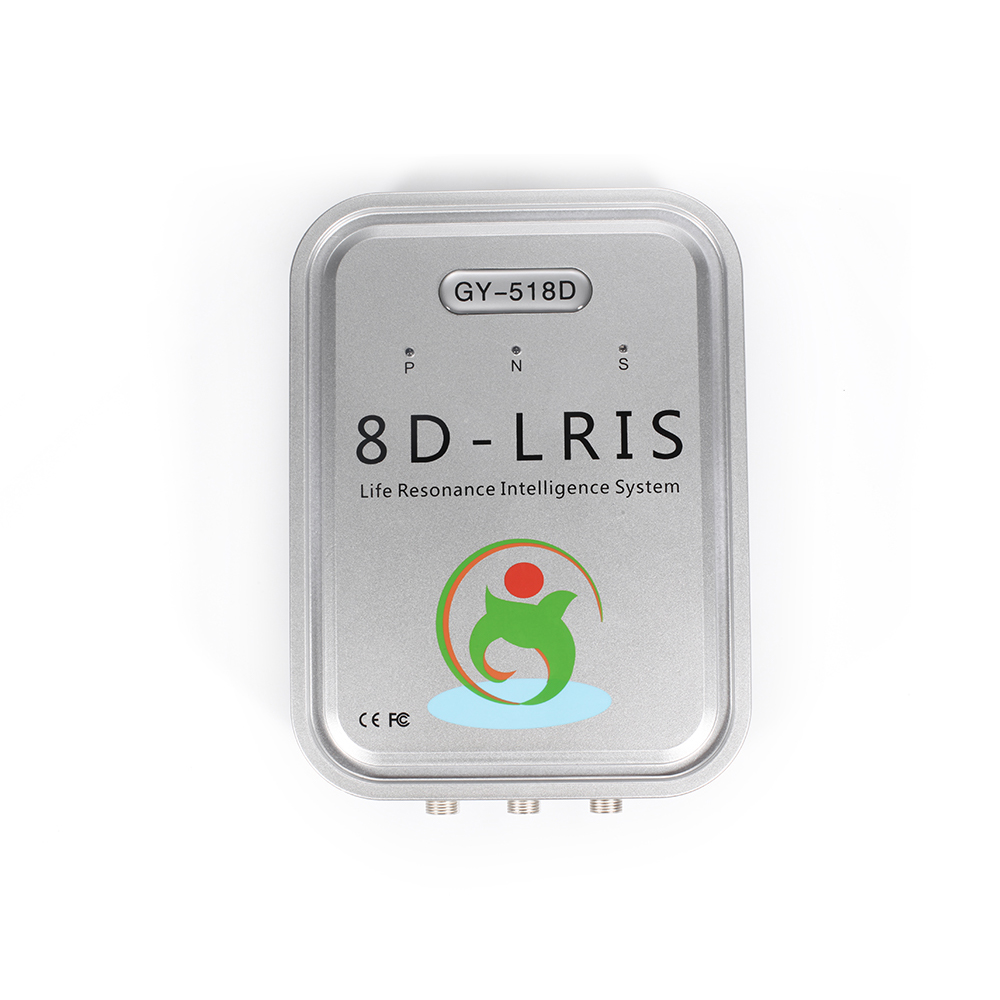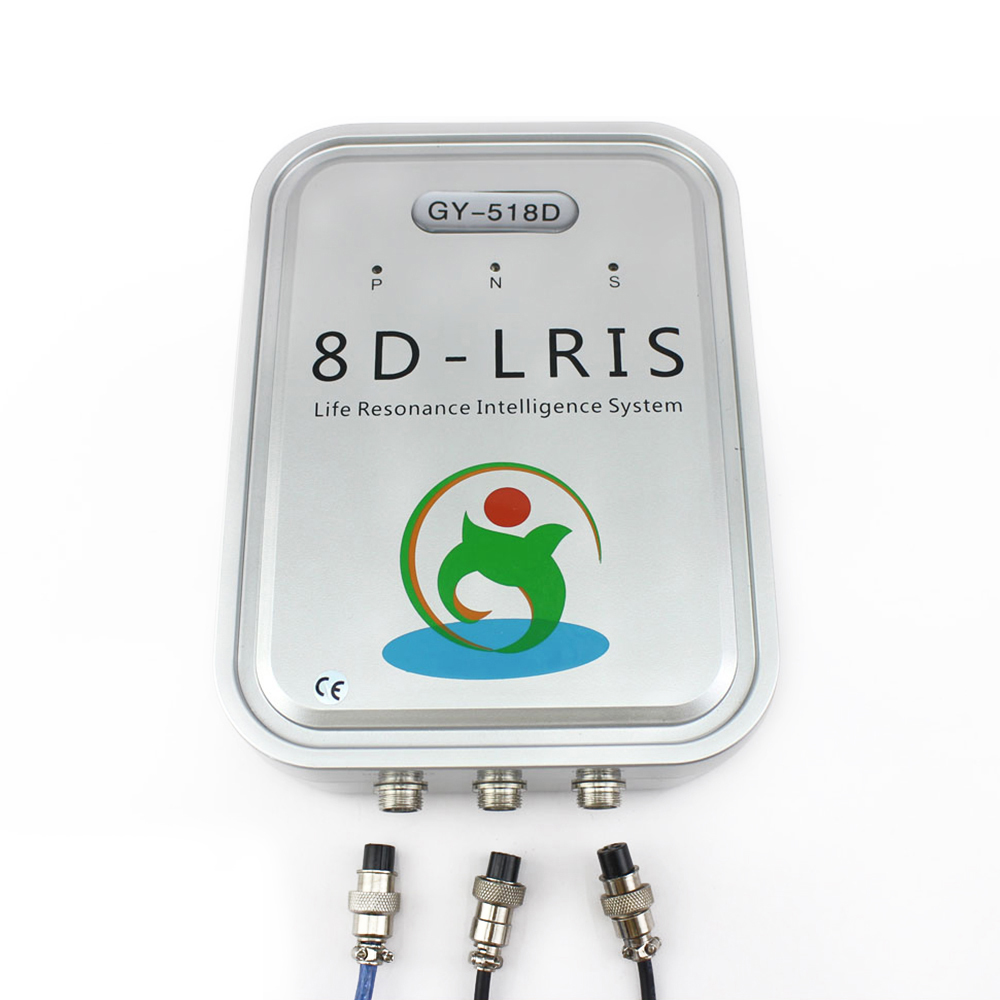What is Vector 8D Nls?
8D Analysis,Vector 8D Nls,8D Nls Full Body Health Analyzer,8D Lris Health Analyzer Shenzhen Guangyang Zhongkang Technology Co., Ltd , http://www.lighttherapymachine.com
I. Preparation
1. Nursery pond configuration and treatment The nursery pond is an outdoor rectangular concrete pool structure. The top of the pool is covered with canvas, and it is equipped with facilities such as electricity, heating, oxygenation, and drainage. Before nursery production, nursery ponds need to be disinfected, mainly in four steps: the first step is to fill the nursery pond with water, soak for 20 days with 20ppm oxalic acid; the second step with detergent and diluted to 10% concentration of hydrochloric acid will Clean the pool wall, bottom of the tank, heating equipment, and aeration equipment, and then rinse with clean water. In the third step, thoroughly disinfect the entire nursery pond with 50ppm potassium permanganate. The general disinfection time is 15 minutes to 20 minutes; In the fourth step, if any potassium permanganate is found, it should be cleaned with oxalic acid and rinsed with clean water. After the above operation, the nursery pond can be put into use.
2. Pretreatment of nursery water The offshore pumping sand filtration system is established. When the seawater reaches the high water level, seawater is directly pumped into the sedimentation tank through the sea filtration system, thus ensuring that the seawater of the nursery water source is fresh and the impurity content is low. After the sedimentation tank is filled with water, the salinity and pH of the seawater shall be determined. The proportion of water used for nursery shall be controlled to be more than 1.016, and the pH shall be controlled at about 8.4. Disinfect with chlorine (Iodine) disinfectant, the content of available chlorine when disinfected reaches 0.5ppm above, aerate after 24 hours, can use again after 24 hours. Add EDTA ~ 2Na salt 4ppm ~ 6ppm heavy metal elements in the complex of water. Water for nursery will enter the nursery pond directly after passing through the secondary sand filter.
Second, larval rearing
1. The technical route for the cultivation of shrimp larvae is to detect broodstock → hatching → larvae → do not carry WSSV, TSV virus to carry out regular tests to prevent horizontal transmission → eliminate unqualified larvae, select qualified larvae to enter nursery ponds for cultivation → selection High-quality feed, fresh water quality, rational use of drugs → shrimp phase → PCR detection of WSSV and TSV viruses, elimination of unqualified larvae → high-quality feed, live bait and bait → larvae → sampling for specific pathogens, detection of shrimp viability, Control company standards to eliminate unqualified larvae → sell qualified seedlings.
2. Enterprise Standards for Qualified Shrimp Enterprise The standard for nursery farms is as follows: shrimp body length ≥ 0.8cm, smooth surface and no attachments, strong vitality and anti-micro-flowing water, complete appendages, long body, strong posture , Fullness, the difference between the individual's uniformity is not obvious, the body color is normally transparent, and the detection of WSSV and TSV is negative.
3. Selection of larvae and stocking The broodstock used for production are all detected as SPF broodstock (that is, they are tested without carrying WSSV, TSV virus), and they are often sampled in the production process, which can basically eliminate the verticality of the above two viruses. Transmission, but when larvae are stocked, a part of the larvae should also be tested and tested without carrying the virus before continuing the culture. Before the larvae are released, they are soaked with an iodine preparation containing 3ppm to 5ppm of available iodine for about 30 seconds. The larvae are rinsed with fresh seedlings and then placed in a nursery pond. The stocking density is 150,000 to 200,000/m3.
4. Aquaculture management In order to protect the nutritional needs of larvae, healthy nutrient feeds should be fed. In the braiding stage, plant-based feed is used as the main ingredient. In the nursery water body, Corynedonella sp. (added after the other pool is incubated) is put into 100,000/ml to 150,000/ml, and artificial supplementary feed such as shrimp chips and Bp is rubbed through the 250 mesh mesh cloth. After feeding by filtration, the man-eating period is dominated by artificial feed. When feeding, 150-mesh net clothing is used for filtering, and algae, Artemia (Artemia) or rotifers are appropriately fed; larval period is fed with artificial feed and Fengnian Insects are mainly artificial feeds that need to be filtered through 100 mesh screens. The feeding amount can be flexibly controlled based on the stocking density of the larvae, changes in the water color, and feeding conditions of the larvae.
The water temperature should be controlled within the gradient range of 29.5°C to 31.5°C, and it is against high temperature seedlings. Generally, it is controlled at 30.0°C~30.5°C in the early and middle stage of the braided stage, and gradually changed to 31.0°C in the late stage; the shrimp stage gradually changes to 31.5°C; the water temperature gradually decreases during the prawns stage and can be adjusted to the required water temperature of the farm as needed.
Inflation is a necessary condition for high-density seedlings. Its positive significance is: First, it can ensure sufficient dissolved oxygen content in the water body; Second, it can make pool water convection and fully mix to ensure uniform distribution of larvae and feed; Third, it can make larvae The reduction of energy consumption during floating movement is beneficial to its abnormal development. Fourth, the convection of water can increase the temperature of heating evenly. The adjustment of the aeration rate is mainly based on the size of the seedlings, the feeding capacity, the amount of feed, and other factors from the larvae to the larvae. The water surface gradually changes from boiling water to boiling.
5. The growth test was randomly selected before stage III of the shrimp and the shrimp were out of the pool, and the specific virus WSSV and TSV were detected by in vitro gene amplification (PCR) technology. It was found that the larvae carrying the virus use the effective chlorine at 5 ppm to 10 ppm. After treatment, it was removed and it was determined that no virus-carrying larvae were sold to the farm.
6. Disease prevention and control In the production, the principle of “prevention first, prevention and control combined†is always implemented, and fishery drugs with good efficacy, no drug residues, and environmental protection are regularly selected for prevention, such as complexing iodine preparations and biological agents, etc. It inhibits the growth of bacteria and fungi, and maintains the stability of the beneficial water ecosystem. At the same time, various vitamins and immunopolysaccharides are added to the feed to enhance the constitution of shrimps, maintain vitality, and grow healthily.
Third, typical nursery cases
1. On April 12, 2004, 6 million larvae of P. vannamei that had been identified as having no specific virus after strict disinfection and testing were stocked, with a stocking density of 150,000/m3, and a nursery pond size of 20 m3/pound, strictly in accordance with shrimp. The cultivation of the seedlings will be nurtured;
2. During the entire nursery period, keeping the water body fresh, the water color is shallow and deep until the end is dark reddish-brown, a gradual process. With the deepening of the water color, the transparency of the water body decreases, which is also a gradual process. The water body has no odor, no deterioration, and the proportion of water and pH are stable;
3. During the nursery, from the larval body to the larval body, the larvae, the larvae, the shrimps, and the larvae, the shrimps are all metamorphosed smoothly, without pathological changes, no adverse reactions, and the prawn has uniform size, smooth surface, strong vigor, good elasticity, and transparent muscles. The water-repellent is strong, and the fork of the base of the eye stem is obvious, which is the better-quality seed to be pursued in aquaculture production;
A total of 3.6 million seedlings emerged in the 4.2 nursery ponds, with an average of 90,000/cubic meters and a survival rate of 60%.
5. Through the sampling tests on the seedlings in the 2 nursery ponds, the WSSV and TSV test results were all negative, and it was judged as SPF Penaeus vannamei seedlings.
The purpose of this training program is not a detailed physical justification of the principles of the «8D-LRIS» device, since different devices are designed differently. Currently, there are several manufacturers of this equipment, [spinoffs" from the original research group. In particular, in the original version of Russian, the headphones were used as magneto-inductors with an oscillation frequency, which is close to the thetarhythm of the brain, while in later versions of the device - as a conductor of electromagnetic waves that are close to the alpha rhythm of the brain. A good effect is obtained from the use of electromagnetic waves as a trigger mechanism for the study of a healthy body.Also, in many other versions of the device, laser emitters are used to affect the brain of the patient.Using the laser leads to an increase of the resonant response. However, there is a risk of adverse effects of such exposure, so the laser
emitter is not used in all models of «8D-LRIS» equipment.

Facts about the program:
Equipment set up on a modern element base, has a stylish design, and interfaces with a PC via USB-port. The unit LRIS-nls device has a digital trigger sensor in the unit and an analog trigger sensor which is built into the bio inductor.
The program works steadily on any Windows operating system (Windows operating system XP/Vista/7) New versions are available for free download from the site
Base standards greatly expanded and continue to grow A detailed user E-manual is included.
Assessment of the chakras and aura.
(An aura is the electromagnetic field that surrounds every living being and is manifested in the physical field by electrically charged objects that represent themselves as different colors that surround the body. This electromagnetic field can provide information regarding a person`s emotional state, the quality of consciousness and will determine the level of health regarding an individual organ and organ systems.)
8D Lris Nls Range:
LRIS-NLS can be used by anyone who is interested in quickly and effectively examining the health of their patients, clients, friends, family or employees. Accurate analysis is the driving factor of our company and no matter whom you are or what you do, you will be well informed with the information you will gather from the LRIS-NLS device, and so will everyone you work with.
Remember that the information is being gathered on a cellular level, and the beauty of this method of diagnosis is that before anything is manifested, it is found.
People who fall under any of the following categories are welcome, advised and will find benefit in using and having a LRIS-NLS biofeedback device.

Industrialized Cultivation of SPF Healthy Seeds of South American White Shrimp
In 1999, when Penaeus vannamei was just introduced, it was generally cultivated for 70 days to 90 days. The size of the shrimp can reach 60/kg; now, the average size of the shrimp is only 200/kg for 70 days to 90 days. Therefore, attention is paid to South America. White prawn SPF broodstock breeding and South American white shrimp SPF healthy seed cultivation, in the production of seedlings strictly regulate the seed production process, including SPF broodstock, larvae detection, pretreatment (precipitation, disinfection) nursery Water, selective use of environmentally friendly and effective drugs, and feeding high-quality nutrient feeds, etc., to ensure that the seedlings of P. vannamei are robust and free from specific pathogens, is particularly important for industrial production of SPF healthy seedlings of Penaeus vannamei.
